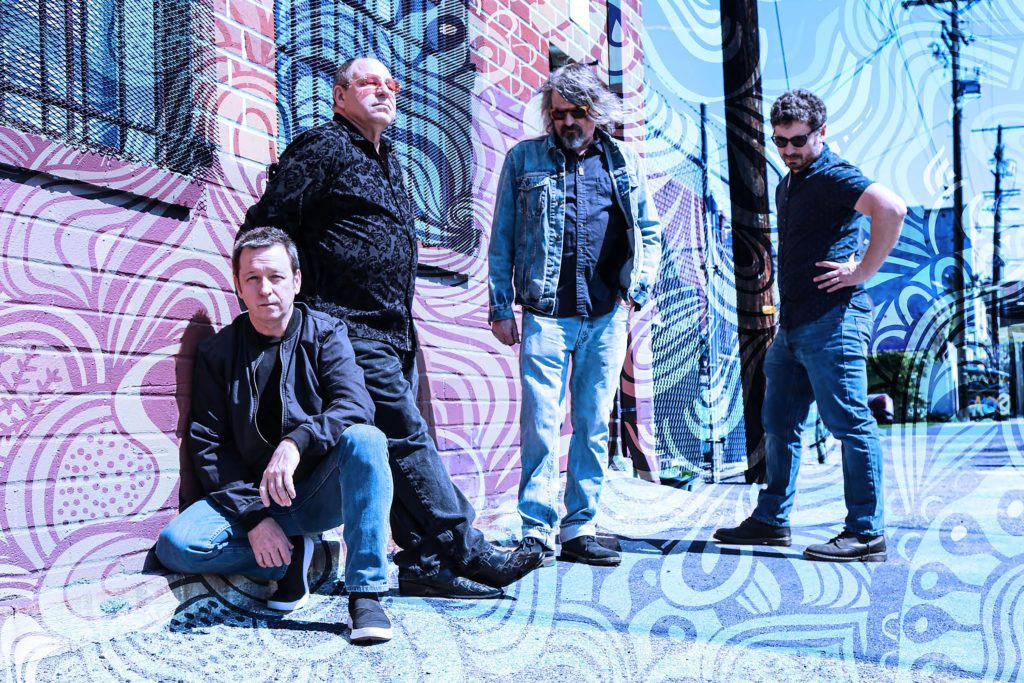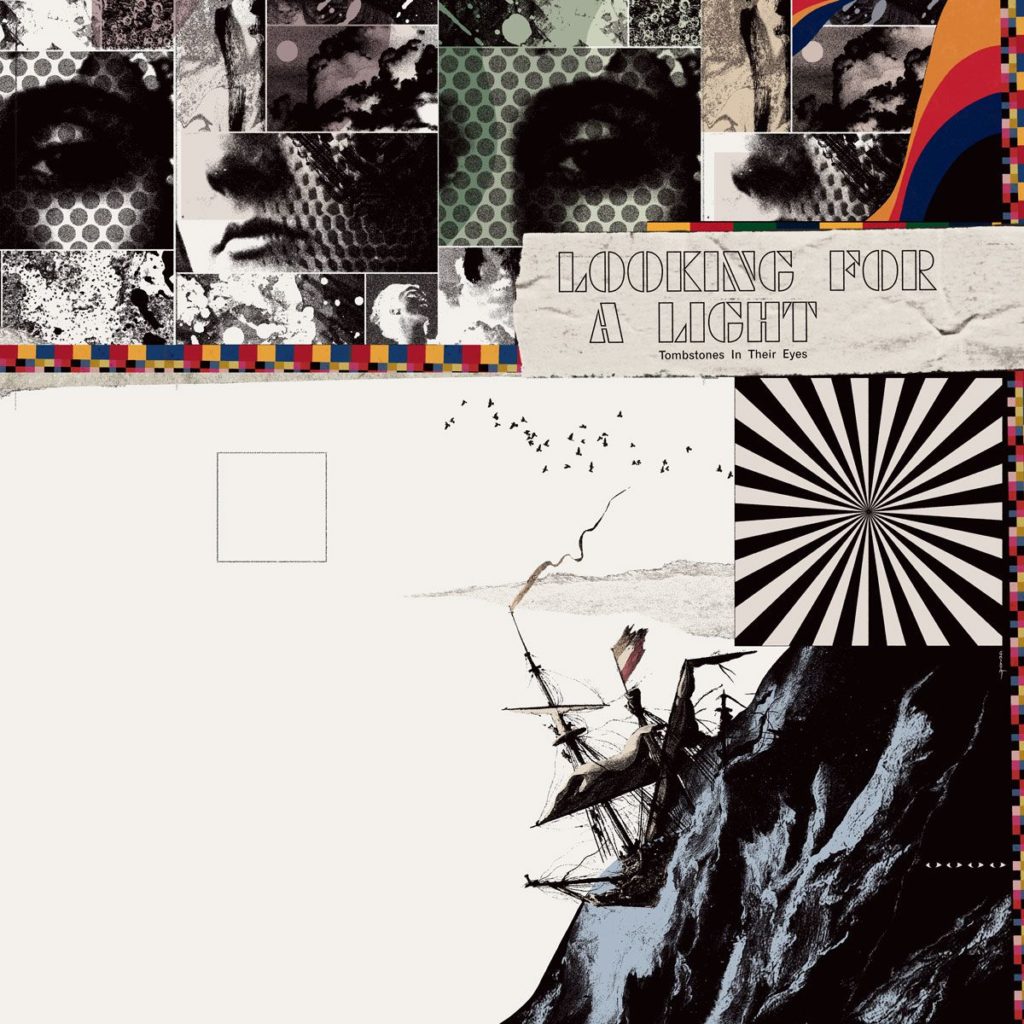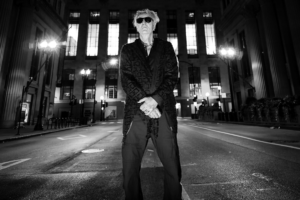TOMBSTONES IN THEIR EYES – Looking for a music light!

Interview with John Treanor of Tombstones In Their Eyes
1.What is the meaning behind the band’s name TOMBSTONES IN THEIR EYES?
The band name comes from a lyric in a song called “The Pusher”, originally written by Hoy Axton, but made famous by Steppenwolf (it was also featured in the movie Easy Rider). Part of the lyrics:
You know I smoked a lot of grass
And I popped a couple of pills, now
But I never touched nothin’ that
Could break my will, now
But I’ve seen a lot of people
With tombstones in their eyes
If they don’t get their hard stuff
You know they’re gonna die
God damn the pusher man
2. What did it lead to the formation of the band and what about your main musical and spiritual influences?
The band formed when I reconnected with an old childhood friend, James Cooper, who lives in New York now. I live in Los Angeles, but we started to write songs together and sharing the files through Dropbox. I named the band, or project, during that time. We just kept writing, never thinking it would go anywhere. Eventually, however, I decided that we had enough songs to go into a local LA studio with some friends, Sam Sherwood on drums and Josh Drew on bass, and record the first album.
My musical influences are varied and go back a long way, from the Beach Boys, Elton John, The Rolling Stones, early Aerosmith, Kiss, etc. Then at 15 I discovered punk rock, buying the Germs (GI) album and Devo’s second album. This started me on a long path through bands like The Cramps, The Gun Club, Black Flag and many more bands of that era. Then, through the 80’s the standouts were Pussy Galore, The Butthole Surfer and Spacemen 3. There was a lot of good independent/alternative music during the 80’s and 90′. I discovered The Brian Jonestown Massacre in the mid 90’s and they really struck a chord. They’ve been a big influence, as have the first 3 Dandy Warhols records. There’s too much more to mention, but I hope you get the idea.
Spiritually, my influences are varied and nebulous. I don’t follow a specific religion, but rely on my own form of spirituality for that need.
3. You have a new album called LOOKING FOR A LIGHT. Which is the light that you are looking “to guide you home” as you mention on the lyrics of the self-titled track?
A lot of my earlier lyrics were about the “darkness” inside. That came from some periods of depression that I experienced, especially during the first few years to the band. Music became a powerful outlet for that darkness, and I wrote a lot of songs during that period of time. I still like to write about that darkness, fear, being alone, etc. So, the light I’m referring to is not specific, it is whatever I or the listener can find to feel better, less alone, less fearful.
4. Where, and how did you record your new album?
The album was recorded at my home studio and Kitten Robot Studio. I recorded the demos at home and then brought the tracks to Kitten Robot. There, we use the guitar tracks I have recorded at home, but add new vocals, bass, and live drums and percussion. Stephen Striegel handles the live drums and percussion. Josh Drew played bass on most of the songs, with Paul Boutin, a new member of the band, adding a little bass, as well. Then, when all the elements are in place, Paul Roessler and I mix it until it gets to where we want it to be, sound-wise. For this album, we had 13 songs recorded and completed, and chose 8 for the record.
5. Did the pandemic inspire you while writing the lyrics since I can feel some dark themes are being discussed in the lyrics of the album.
Our lyrics have always been pretty dark, especially in the very early stages of the band. In a way, this is our lightest record, lyrically. Nonetheless, that darkness does remain – it’s just something that I’m drawn to. I like to listen to dark music, and find it soothing to both listen to and create.
6. How did you approach your new album musically, any special techniques in terms of gear or the process of songwriting?
Musically, the new album was written in the same way as our other recordings. I create a drum track in Logic Pro, then record a rhythm guitar track. Then I do a pass through of the song on vocals, without anything written, and just sing whatever comes out, stream of consciousness style. Then I write down what came out, and may tweak the lyrics a little, but I generally like to stick with the first ideas when I can. I like doing it that way and like the way it just comes out of nowhere. For the demos, I have two main pieces of gear (besides a lot of guitar pedals) that I rely on. One being the Chinese microphone that I bought in Sweden about 10 years ago – it’s a copy of a Neumann and sounds great. The other is the Kemper Amp Simulator. This allows me to record direct to Logic without making a lot of noise in the basement, and it also gets incredible tones for a fake amp, haha.
7. Who did design the cover artwork of the album, and which is the concept behind it?
The cover was done by Robin Gnista, a great Swedish artist who does a lot of pscyhedelic artwork. We had worked with him previously on the cover for our Nothing Here EP. I don’t know the concept, except that our rule is that it has to contain an old sailing ship. That’s a theme I started years ago. Old sailing ships in storms is my preference, and that relates to how I felt and sometimes still feel my life is like, at least inside. Lost in a storm. Otherwise, with that one rule, Robin just did his thing and came up with a brilliant cover without any input from us.

8. Do you use any special filters for the fuzzy vocals, and what is your recommendation for singers that wish to produce psych vocals for their recordings?
That’s a good question, haha. I don’t really know, as Paul Roessler handles that side of things. I just describe the sound I’m going for and he makes it happen. I do like to use one effect called Echoboy Jr on my home recordings and Paul now uses it in the studio, as well, so that appears here and there.
9. The new album was produced by Paul Roessler, how did he contribute on the final audio result?
Paul is essential to TITE. We have formed a very close relationship over the past 6 years or so. He “gets” the band and what we’re going for. We communicate well, I trust his input, criticisms and ideas. He also helps me with harmony and backgound vocals, either by coaching me or contributing ideas, and sometimes sings them himself. He also plays keyboards on some tracks. That, and his great knowledge of music and producing, really makes a big difference in our sound. Paul is invaluable to us.
10. What about your next music plans?
We already have 5 songs fully recorded for possible inclusion on a follow up record, and are going into the studio in early May to put down drums and vocals for 5 or 6 more. I have been writing a lot, so I expect to have another record finished later this year, with more than enough songs to choose from. We will also, as things open up, have to pick songs for a setlist, start practicing and get the live band active again.
Information: Tombstones In Their Eyes
Photo credits: Rachel Roessler


